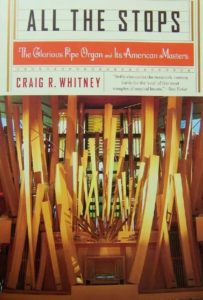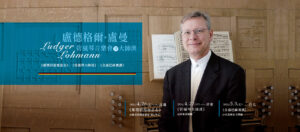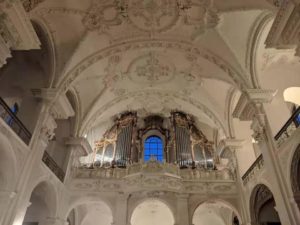呂娜堡管風琴Lüneburg與《小管風琴曲集》Orgelbüchlein
專訪德國國立斯圖加特音樂與表演藝術大學,管風琴、大鍵琴教授與指揮家Jörg Halubek。
Special interview with Jörg Halubek, professor of organ and harpsichord at the University of Music and Performing Arts in Stuttgart. He won the highest honor at the 2004 Bach competition in Leipzig. Currently, he’s in the process of using the early and survived instruments to record the complete works of Bach. This is a musical marathon testing the technique, perseverance, and creativity of an organ performer. We thank him for taking time out of his incredibly busy schedule to share his Bach project and his teaching experience with Orgelkids Taiwan.
Jörg Halubek先生早年于斯圖加特和弗賴堡,跟隨管風琴泰斗Jon Laukvik(喬恩.勞克維克)教授、古樂大師Robert Hill(羅伯特.希爾)教授,學習管風琴和大鍵琴。而後在世界頂尖的西方早期音樂專業院校——瑞士巴塞爾的Schola Cantorum Basiliensis(巴塞爾古樂學院)繼續深造歷史鍵盤演奏。2004年,他榮獲了巴洛克管風琴演奏的至高榮譽——德國萊比錫巴赫大賽管風琴組冠軍。他目前正在進行用各類歷史遺留的原版管風琴,錄製J.S.Bach的全套管風琴作品。這是一個幾乎所有管風琴家都樂意做的、最富有挑戰性的大工程之一,也是一場考驗管風琴演奏家在技術、毅力、創造力的音樂馬拉松長跑。
這次非常榮幸,能邀請到我的教授,Jörg Halubek先生,談談他近期在進行的Bach Project,以及他以往的管風琴演出和教學經歷,並和我們分享他的藝術人生。
1.你第一次看見這座管風琴是在什麼時候?當時有何印象?
「是在2018年秋天,我要錄音之前不久,當時的第一印象是:巨大的教堂、極大的音響效果,龐大的管風琴,而且原本的琴座外觀太驚人了。修復工作從20世紀中葉開始進行,這表示我們並沒有原本的琴聲,已經做了相當多的改變,但調音系統是相同的。但因為我想要有德國管風琴文化的各個面向,這座管風琴就非常重要,它目前還是有文藝復興時期和巴洛克時期的原始音管,即使在修復上還是有一些問題,仍然可以感覺到這座管風琴原本的個性。再過幾年,德國管風琴建造家兼北德管風琴專家Hendrik Ahrend將展開一項耗資兩百萬歐元的修復計畫。現在可以從我的錄音聽出1960年代的巴洛克修復美學,等到Hendrik Ahrend修復完成,或許我會去做第二次的錄音。」
“First time was shorty before my recoding in autumn 2018. First impression was: huge church, huge accustic, huge organ with an amazing original prospect. The restauration is from mid of 20 century, which means, we dont have the original sound, lots of changes we made, the tunig system is equal. But as I want a variety of aspects of the german organ cultural, this instrument is very important. We still have original pipes from the Renaissance time and from the baroque period. Even if there are some problems for point of restauation you still feel the original personaliry. In some years the german organ builder and specialist for north german instruments – Hendrik Ahrend – will start a restauration for around 2 millions €. We can here now on my recording the baroque restauration asthetic of the 60ies, maybe I´ll go there a second time to record after Ahrends restauration.”
2. 你為何選擇這座管風琴?我想問的是,為什麼要用這座管風琴來錄製《小管風琴曲集》?是因為這座琴有什麼特殊之處或性能,還是有別的原因?這樣是完美的搭配嗎?
「巴哈15歲時在呂娜堡就學,必定會被北德的管風琴家和管風琴所吸引,他還曾向博姆(Böhm)學藝,或許也曾在漢堡就教於賴因肯(Reinken)。這個時期的巴哈作品包含獨一無二的音樂材料,令他正式踏上作曲生涯的第一步,不久後他就在威瑪(Weimar)譜寫《小管風琴曲集》,非常清楚表現出在作曲上已有變化,每一首聖詠前奏曲都有一段基本的樂曲主題,而他非常早期的作品則充滿許多繽紛的樂思。我認為,他的作品變得具有統一的動機(最極致的實例就是《賦格的藝術》——超過一小時的音樂,只本於單一主題),與他早年曾在呂貝克(Lubeck)向博姆學藝有關。用巨型管風琴演奏《小管風琴曲集》還有另一個好處,就是為這四十五個樂曲增添新的色彩,尤其是CD唱片。」
“Bach studied in Lüneburg whey he was 15 years old. He must have beend attracted by the north german organists and instruments and had lessons with Böhm and propable Reinken in Hamburg. In these years Bach did the first steps as composer in the directs of unique musical material for his pieces. The Orgelbüchlein which was composed a bit later in Weimar shows this change of composing very clearly. For each Choral Prelude you have normal one basic musical motiv. Bachs very early pieces are colorful with a lot of musical ideas. The change in the direction of motivic unity (most extrem in the Art of Fuge – more than one hour of music based on just one theme) is for me connected the the early study years with Böhm in Lübeck. To have a huge instrument for the Orgelbüchlen on the other hand is good, to change the colors for the 45 pieces – especially on a CD.”
3. 可否請你為我們簡介這座管風琴最特別、最令人驚豔的一兩個音栓?這些音栓如何營造出更具創意的不同效果?
「我們都知道巴哈喜愛北德管風琴的簧管和32呎音栓,例如漢堡的聖凱薩琳教堂管風琴(我剛在那裡錄完一套巴哈CD唱片)。呂娜堡的32呎音栓正是如此。手鍵盤的16呎基礎音栓和腳鍵盤的32呎音栓齊奏時,巨大的音響效果便製造出極為宏亮的音樂,可能是我所聽過最強有力的巴洛克音樂。因為我們經常處理小型的室內樂團體,這種管風琴音樂雖然譜寫於同一時期,卻有完全不同的美感。8呎主音管仍相當接近非常早期的文藝復興美學標準,令人覺得非常親切又古色古香。」
“We know that Bach liked the Reeds and the 32’stops of the north german organs – like in St. Katharinen in Hamburg (where I just recoded a next Bach-CD). So even in Lüneburg the 32. And the pleno on 16´basis in manuals and 32’in the pedal – and in that huge acoustic – leads to a monumental sound, which might be the most powerfull“baroque”- sound I ever heart. As we often deal with small chamber music groups, this kind of organ sound is a total different asthetic of the same period. The principal 8 is still very close to the very early renaissance astehtic, very intimitate and archaic.”
4. 是否有哪幾個音栓並不是那麼理想?我的意思是,如果有些音栓無法達到你所要的音質,你要怎麼處理這樣的問題?
「我花費了一些時間來找出理想的組合方式。我們通常可以用原本那個時期的樂器做出任何的組合,但剛才提到過,19世紀管風琴建造家所做的改變,產生了某些音質的平衡差度。我在選擇音栓配置時,經常會帶著一個學生,我坐在教堂裡,學生彈琴,我們就用行動電話溝通要如何調整音栓組合。對我而言,一定要在教堂裡聽到自己演奏出來的聲音。」(待續)
“It took some time to finde good combinations. Normally in original period instrument you can combine everything, but as I mentioned, the changes during the generations of orgenbuliders in the 19th century creates some disbalances. Normally one of my students join me for the time of doing registrations. I sit in the church, my student playes and on mobile we communicate to change combinations. For me its important to hear myself in the church.” (To be continued)
訪談:柯可心 (就讀於斯圖加特國立音樂與表演藝術大學,學習大鍵琴、西方早期音樂Early Music、與管風琴)





